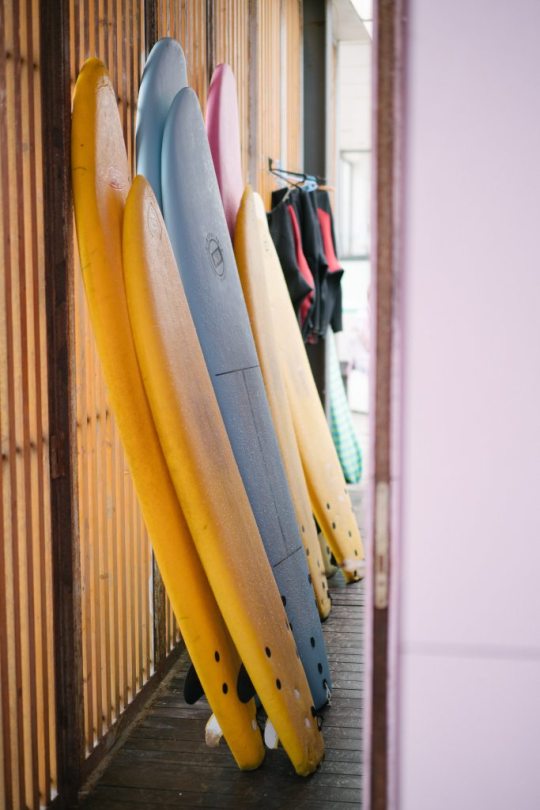An accomplished financial executive and Las Vegas, Nevada resident, Seth Koppes founded Bancorp Services, LLC in 1993. Since then, he has guided the firm in developing structured financial products for banking and business organizations with unique needs. Headquartered in St. Louis, Missouri, Bancorp Services also prioritizes technological solutions to implement and support these products. Seth Koppes holds several patents for the firm’s proprietary software systems, which increase cost-effectiveness and efficiency among financial structures. A graduate of the University of Missouri, Seth Koppes holds a bachelor of science. In addition to his work with Bancorp, he pursues up-to-date knowledge in the areas of health and technology. In his free time, he enjoys roasting his coffee and engaging in water sports such as swimming, paddling, and sailing. Combining his love of the water with an avid interest in carpentry, he has constructed various outrigger canoes in Hawaii, including a six-person outrigger and a one-person surf ski. His other hobbies include golfing and cycling.
Don't wanna be here? Send us removal request.
Text
0 notes
Text
0 notes
Text
0 notes
Text
0 notes
Text
Factors to Consider Before Enrolling in an NQDC Plan

A Non-Qualified Deferred Compensation (NQDC) plan allows a high-compensation-earning employee to defer the payment of a significant portion of their wages, bonuses, and other remuneration later. In effect, the taxes associated with the deferred compensation are also deferred. The deferred amounts are kept in a separate account held in trust. Some people use the NQDC plan as a tax reduction tool if they expect to belong to a lower tax bracket when the deferred compensation is paid. According to federal tax laws, the NQDC must be put in writing, and the amount to be paid, the schedule of payment, and the event that triggers its payment must be specified.
The NQDC plan, as a retirement tool, is not for everyone. Usually, this option is available only to employees holding executive positions as part of their retirement benefits. One foremost reason for this is that 401(k) plans are usually insufficient for high-income earners. Hence, it is essential to understand how the NQDC works before enrolling in an NQDC plan. Here are some factors to consider.
Maxed out 401(k) plan. The NQDC plan is only secondary to the 401(k) plan. Under the Internal Revenue Service rules, (401(k) plans are directly funded and protected, features absent in an NQDC plan. Enroll in an NQDC plan only after making a maximum contribution to the (401(k) plan.
Present cash flows. Consider enrolling in an NQDC plan only if your present cash flows allow you to forgo a significant portion of your future earnings. Remember that the amount you select to defer is irrevocable.
Lower tax bracket in the future. You can maximize the benefits of an NQDC plan when you expect to fall into a lower tax bracket on payment day.
Financially stable employer. Ensure that your employer has the financial capacity to honor the terms of the NQDC plan when payment day comes.
0 notes
Text
How to Become a Coffee Connoisseur

Becoming a coffee connoisseur requires time, commitment, and self-drive for the art. Also known as coffee snobs, a coffee connoisseur is committed to searching for the latest coffee trends and products. But what do you need to join this league of coffee experts?
First, you need in-depth knowledge and a passion for coffee and its various aspects. This includes learning the drink’s history, culture, and production. Additionally, you must understand the specialty coffee drinks, the flavor profiles, different roasts, brewing methods, and the types of beans. For example, the coffee beans to know more about include Arabica, Robusta, Liberica, and Excelsa.
Explore different online resources, cafes, and reputable coffee shops, and attend coffee events, competitions, and workshops because this is where you connect with other coffee enthusiasts and learn from them. You may also learn about the different roasting techniques, such as the light roast, medium roast, medium dark roast, and dark roast.
Doing this can help you familiarize yourself with the different coffee brewing equipment as you develop a unique taste to sample and distinguish various nuances of coffee flavors. Acquainting yourself with coffee brewing equipment goes hand in hand with knowing the different brewing methods, which include Pour Over Coffee, Siphon, and Espresso.
0 notes
Text
The International Scale of River Difficulty

Kayakers and canoe enthusiasts should familiarize themselves with the International Scale of River Difficulty, which describes the challenge posed to paddlers by different waterways. The scale includes six categories of difficulty.
Beginners are best suited to Class I and Class II rapids. Neither class presents much of a challenge: waves are small and infrequent, there are few obstructions and those present are easily seen and navigated, and self-rescue is easy in the event of capsizing. Paddlers may require some training in order to negotiate challenges on Class II rapids, especially those designated as Class II+.
Class III and Class IV rapids are considered intermediate and advanced, respectively. Class III is the first level at which rivers can swamp an open canoe, meaning the entire craft is submerged. Tight passages and ledges force paddlers to navigate narrow, complex passages. By Class IV, any person who falls overboard is at risk, injury and coordinated group efforts are frequently required for rescue.
Class V is the last standard rating for rivers. These rivers are characterized by long, heavily obstructed, or extremely powerful rapids and should only be attempted by expert paddlers. Individuals must be both technically skilled and physically fit. If possible, paddlers should scout the route beforehand.
Class VI rivers are considered “extreme and exploratory rapids.” In most cases, Class VI rivers have never been attempted, and a river may be downgraded to Class V after a team successfully documents a voyage. These rivers should only be attempted by world-class paddlers under ideal conditions, following extensive scouting. The risk of injury or death to paddlers who fall overboard is significant.
0 notes
Text
How to Recover from a Capsized Canoe

More than 9 million Americans went canoeing at least once in 2021. While canoes are considered relatively stable and easy to paddle, there is still the possibility that at some point the canoe will capsize. Should this happen, individuals can take several steps to ensure their safety and get back in the boat.
If a paddler capsizes while alone, the first thing to remember is to stay calm. It can be helpful to practice the recovery maneuver, intentionally capsizing a canoe in a calm, controlled environment. This not only allows individuals to test their capsize response, but also grow accustomed to the sensation of being submerged underwater.
The first step is to get out from under the canoe and surface. If the canoe capsized near shore, individuals can simply swim to land (hanging on to and pulling the canoe), then using the leverage of solid ground to turn the canoe over. In deep water, individuals can position themselves under the center of the canoe, set either hand on the canoe rails, and lift one side to break the suction. After the canoe has been lifted from the water, it can be turned over to one side.
Paddlers can empty a canoe of water after capsizing by grabbing the middle of the rail and rocking the canoe back and forth, spilling the water over both sides. Individuals can then grab the far rail with both hands and pull themselves in.
Paddlers who capsize with a partner can follow the same steps, but will only need to exert half the effort. It is especially easy to reenter the canoe if the two paddlers pull themselves in from opposite sides at the same time.
0 notes
Text
Capital Preservation Feature of Structured Investment Products

An accomplished financial executive and philanthropist in Las Vegas, Nevada, Seth Koppes holds a BS from the University of Missouri. Seth Koppes has been the CEO of Bancorp Services in St. Louis, Missouri, for over three decades. The company assists large financial institutions and Fortune 500 organizations by developing innovative, structured financial products.
Structured financial products, often called structured investment products (SIPs), are specialized investment offerings encompassing a tailored mix of financial instruments designed to meet unique investor needs. Investment banks typically issue SIPs to individual investors, hedge funds, and other clients.
SIP has capital preservation earmarks because it departs from the conventional payment structure. Instead of adhering to the standard interest payments and final principal returns, these products introduce novel ways of generating returns. These returns are not derived from the issuer's cash flow but are linked to the performance of underlying assets.
Investors seeking regular income from their investments and desiring exposure to the broader financial markets might consider a structured product combining fixed income and equities features. For example, they invest $2,000 in a product that doesn't provide traditional interest payments but offers annual returns linked to the performance of a major stock index like the Nasdaq 100.
If the index experiences growth, the investor receives some of those gains. If it declines, they will still receive their initial $2,000 after a specific period. It's akin to having an investment instrument that provides income opportunities while maintaining some connection to stock market performance.
0 notes
Text
The Surfski - A Light and Versatile Craft for Big Wave Conditions

Seth Koppes is a longtime financial executive who leads Bancorp Services, LLC and works with clients from banking institutions and companies. With skills in carpentry and a passion for the ocean, Seth Koppes has worked to create a variety of canoes in Hawaii, ranging from a double-hull, six-man outrigger to a single-person surfski.
A surfski combines elements of a rowing shell and a kayak but is lighter and faster than the kayak, allowing the paddler to ride with waves comfortably. Unlike with the kayak, the paddler simply climbs back into it should they get tipped out. This quality makes the surfski ideal for challenging big waves that would give sea kayakers concerns about flipping in heavy surf and having to reenter the boat.
In addition, the surfski has a length and narrowness that enables it to punch through or cut large or breaking waves effectively. With balance an issue, contemporary surfski manufacturers have developed shorter, wider boats that, while not as fast, provide superior stability for beginners in rough conditions. Surfskis are stiff and light with laminates such as single-skin fiberglass to provide toughness while preserving flexibility that enables the absorption of impacts without major damage.
0 notes
Text
Growing Characteristics of Kona Coffee Plants on Hawaii’s Big Island

Guiding Bancorp Services, LLC, Seth Koppes offers services to corporate and banking clients spanning a variety of financial instruments. A coffee enthusiast who enjoys roasting beans and creating the perfect drip brew, Seth Koppes is interested in coffee plants.
One of the most sought-after varieties of coffee is Kona, which is exclusive to the 30-mile Kona Coffee Belt along the west coast of Hawaii’s Big Island. Introduced to the region in the early 19th century, the Kona coffee tree flourished in the steep, nutrient-rich soil offered by the volcanoes Mauna Loa and Hualalai.
Local climate has a large part to do with the superior characteristics of the bean, with the island’s western leeward side relatively warm and dry, offering an average temperature in the 70 to 80 degree Fahrenheit range. With the slopes facing a setting sun each evening, the trees are shielded from the often strong trade winds of the Big Island by the mountains. The coffee trees consistently receive a perfect combination of sun in the morning and rain in the afternoon.
Kona coffee plants are typically transplanted as seedlings and mature in around three years. Once established, the 15-foot tall mature tree often produces berries for a half-century or longer. Each year fragrant white blossoms called “Kona snow” accompany pollination and the 15-week development of cherries (fruit in which two coffee seeds reside). The cherries require seven to 11 more months to ripen and produce a mature coffee bean.
0 notes
Link

Seth Koppes established Bancorp Services, LLC, in 1993 and continues to drive operations at the financial services company as chief executive officer. When he is not leading financial services at Bancorp, Seth Koppes is passionate about the ocean, which he engages through activities such as sailing and surf-ski canoeing. He also works with a charitable organization that sponsors amateur surf competitions, which predominantly feature competitors on thruster surfboards influenced by surfing legend Simon Anderson.
Simon Anderson is an accomplished surfer and writer from Australia. However, Anderson is best known as the surfboard shaper who, in 1980, conceived of a specific type of three-fin surfboard design known as the “thruster.” While surfing was already a popular activity in the United States by 1980, the invention of the thruster played a key role in the sport becoming a mainstream watersport.
Anderson was inspired by Frank Williams, a fellow surfer who had installed a half-moon fin on his board for added stability. After finalizing the placement and size of his three fins, which were smaller than comparable skegs used on twin-fin boards, Anderson had a board that could generate the same speed as a twin-fin but retained the stability and maneuverability of a single-fin. Today, the thruster is the most commonly used fin configuration in the surf industry.
0 notes
Text
The Early Days of Surfing

Based in Las Vegas, Seth Koppes has spent over three decades with Bancorp Services, LLC, in Missouri as the chief executive officer. Seth Koppes is also an active supporter of the Olamau Foundation, which uses canoeing and surfing to promote Polynesian and Hawaiian culture.
Surfing is often associated with the states of Hawaii and California. This is not surprising, considering the sport’s origins. In fact, the earliest known version of surfing was more than a sport, it was a way of life for the Polynesians of several centuries ago. The precise invention of the activity cannot be dated, but surfing was regarded with religious reference in various Polynesian cultures. In some cases mastering surfing was a part of military training.
Surfing existed in some form by the 12th century, and James Cook recorded witnessing Tahitian surfers in 1778, a sight that shocked Cook and his crew. Duke Kahanamoku, an Olympic swimmer from Hawaii, was born a century later and went on to tour the world as a surfer, raising awareness for the sport on the global stage.
Surfing began to grow rapidly in popularity, but it did not threaten to break into the mainstream until a key invention of Californian Jack O’Neill. In 1950 O’Neill invented the wetsuit, which provided swimmers, and surfers, with effective insulation against the cold ocean waters, allowing them to spend longer stretches of time in the water.
The sport exploded in popularity over the following decade, spurred on in part by cultural touchstones that embraced the surfing aesthetic, such as The Beach Boys’ 1960s recordings and Gidget, the first Hollywood surf film.
0 notes
Link

Seth Koppes received a BS from the University of Missouri in Columbia and is now the CEO of Bancorp Services in St. Louis, Missouri. Outside his work life, Seth Koppes enjoys carpentry.
Carpentry is the art and science of working with wood to construct buildings, furniture, and other structures. It has been practiced for thousands of years and is still a highly sought-after skill in the construction industry. Whether you are a professional carpenter or a DIY enthusiast, having a basic understanding of carpentry is essential for creating quality projects.
The first step in carpentry is to familiarize yourself with the tools of the trade. A saw, hammer, chisel, and level are essential for carpentry projects. Additionally, you will need measuring and marking tools such as a tape measure, square, and pencil to ensure accurate cuts and placement.
It is important to choose the right type of wood for your project. Different woods have varying characteristics, such as grain patterns and strength, that can affect the outcome of your project. Softwoods like pine are often used for framing and structural work, while hardwoods like oak and cherry are preferred for furniture and decorative pieces.
Once you have your tools and materials, it is time to start building. Basic carpentry skills include measuring and cutting wood, joining pieces with nails or screws, and sanding and finishing the surface for a smooth, polished appearance. Working safely and wearing appropriate protective gear like safety glasses and gloves is important to avoid injury.
The basics of carpentry involve selecting the right tools and materials, measuring and cutting wood, and joining pieces together to create various structures and furniture. With practice and experience, anyone can master the art of carpentry and create beautiful, functional projects.
0 notes
Link

Seth Koppes is the founder and CEO of Bancorp Services LLC, which was founded in 1993 and is located in St. Louis, Missouri. The company specializes in developing structured financial products for large financial institutions and Fortune 500 organizations. Asides from his main work, Seth Koppes also has extensive knowledge and a keen interest in the insurance industry.
Sustainability has become an increasingly important issue in the insurance industry, with insurers recognizing the need to address environmental, social, and governance (ESG) concerns in their operations. Many insurers have adopted sustainability policies and are taking steps to reduce their environmental footprint, promote social responsibility, and ensure good governance practices.
One key area where insurers are progressing is promoting the transition to a low-carbon economy. Many insurers are diverting from fossil fuel investments and increasing their investments in renewable energy and other sustainable technologies. In addition, insurers are developing new products and services to support climate adaptation and mitigation efforts, such as offering parametric insurance policies to help businesses and communities recover from climate-related events.
Insurers are also focusing on promoting social responsibility, including initiatives to promote diversity and inclusion, support employee well-being, and engage with local communities. Good governance practices, including transparent reporting and stakeholder engagement, are also a key focus for many insurers.
Overall, sustainability is becoming an increasingly important consideration for insurers as they seek to meet customers’ changing needs and address the challenges facing society as a whole.
0 notes
Link

The founder and CEO of Bancorp Services, Seth Koppes is a financial professional who has dedicated his career to advancing the industry. With his expertise in finance and his commitment to finding the best solutions for his clients, Seth Koppes has made Bancorp Services a leading provider of BOLI products.
Banks purchase a type of life insurance policy called Bank-Owned Life Insurance (BOLI) to offset costs and cover liabilities in the event of the death of a key employee or executive. Insurance companies offer three types of BOLI products to banks. These are general accounts, separate accounts, and hybrid accounts.
In a general account product, the bank (the policyholder) makes payments to the insurance carrier’s general account. The insurance carrier can invest the money in diverse asset categories, such as real estate or bonds. The insurance carrier can provide some information about its general account holdings, but is not obligated to provide precise details on how the BOLI contributions are used. General account products are the most common BOLI products.
Under a separate account product, the insurance carrier separates its holdings from its main account and places them in bank-eligible investments. Fund managers are in charge of the investments, and provide comprehensive reporting on the assets in the portfolio. Using a type of ratio called yield-to-worst ratio, the carrier determines the amount of interest that is credited to the policy’s cash value. There is no guaranteed minimum amount of interest.
Hybrid accounts are structured in a manner similar to separate account products, which means the BOLI proceeds are separated from the carrier’s general account and detailed reporting is available. And like general account products, hybrid accounts have a guaranteed minimum amount of interest on the policy’s cash value.
0 notes
Link

A seasoned financial executive with extensive experience in the development of new and efficient financial structures, Seth Koppes holds multiple patents and has been recognized for his innovative contributions to the field. Since 1993, Seth Koppes has served as CEO of Bancorp Services, LLC, a firm that assists large financial institutions and Fortune 500 organizations by developing innovative structured financial products.
Structured products are complex financial instruments with values that are based on the performance of underlying assets, such as stocks, bonds, and commodities. In a structured product, the conventional payment features of investment-grade securities are converted to non-traditional payoffs that are based on asset performance rather than the issuer’s cash flow.
With structured products, retail investors have the opportunity to gain access to derivatives and interest that are linked to pre-packaged groups of assets. These assets are typically institutional-level securities that would otherwise be unavailable to entities that are not institutional investors.
Issuers of structured products pay returns when the products mature. Besides the face value of the asset, additional payments are variable. Each investor will receive a profit that is dependent on the underlying assets’ ROI.
For example, consider a bank that issues notes as structured products, with each note having a $1,000 face value. Each note has two parts – a zero-coupon bond and a call option for an underlying equity (an index-tracking ETF) with a three-year maturity. The bank requires an investor to pay the face amount of $1,000 for the product on its issuing date. Since the note is principal-protected, the investor is certain to receive the face amount when the product matures, regardless of the performance of the underlying assets. They can also earn a return on a one-for-one basis if the note has a higher value when it matures.
0 notes